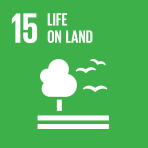Widyan-Salman: Umm er Radhuma-Dammam Aquifer System (North)

- Author: United Nations
- Main Title: Inventory of Shared Water Resources in Western Asia , pp 405-418
- Publication Date: November 2013
- DOI: https://doi.org/10.18356/8437e240-en
- Language: English
The Umm er Radhuma and Dammam Formations constitute the main aquifers in this system, which stretches from the Rutba-Widyan area eastward through the Salman Zone to the Dibdibba Delta, forming a shared aquifer system between Iraq, Kuwait and Saudi Arabia. The two main aquifer formations are composed mainly of limestone and exhibit a shallow water table (0 - 250 m bgl). Limited recharge occurs mainly through the Umm er Radhuma outcrops. The general groundwater flow direction is from the outcrops in the south-west towards the Euphrates Depression and the Gulf coast in the north-east. Good quality water is found around the Salman Zone in Iraq, while springs along the Euphrates River naturally discharge slightly more saline groundwater. Available information indicates that the three riparian countries currently exploit the aquifer system, primarily in the Dammam and the upper part of the Umm er Radhuma Formations, resulting in a waterlevel decline of up to 60 m in both formations. Nevertheless, the aquifer system remains exploitable in most of this section, except in the Widyan Plateau that straddles the Saudi-Iraqi border and coastal areas where it is either dry or contains saline water.
© United Nations
ISBN (PDF):
9789210560320
Book DOI:
https://doi.org/10.18356/48e4072c-en
Related Subject(s):
Natural Resources Water and Energy
Sustainable Development Goals:
-
From This Site
/content/books/9789210560320s006-c008dcterms_title,dcterms_subject,pub_keyword-contentType:Journal -contentType:Contributor -contentType:Concept -contentType:Institution105
/content/books/9789210560320s006-c008
dcterms_title,dcterms_subject,pub_keyword
-contentType:Journal -contentType:Contributor -contentType:Concept -contentType:Institution
10
5


